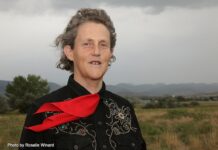WEST LAFAYETTE, Ind. – Matching forage equipment sizes and needs to the number of acres harvested can have a direct impact on the economics of making hay and silage.
Purdue University agricultural and biological engineering professor Dennis Buckmaster has advice for selecting forage machinery, calculating machine capacity and determining harvest transport needs: Do some number crunching on equipment before you buy.
“A few simple calculations can help producers more efficiently produce forage, especially during this time of high forage costs,” Buckmaster said.
Huge input cost. Harvesting machinery and associated labor costs are often the single largest contributor to the cost of producing and delivering forages. Because of this, selection and sizing of equipment is important, he said.
He has compiled capacity information for a wide variety of forage machinery.
“For forage operations, you need to select a set of machinery, not just individual machines,” he said. “Every farm is different, but there are somewhat consistent machinery sets for operations within a particular size range.
“Particularly with silage harvest, it is important to know the harvester’s capacity to properly size other machinery.”
Don’t forget trucks. Buckmaster developed a transport needs model to better estimate the number of trucks an operation needs to keep up with the harvester and also maintain efficiency and power consumption.
Some farmers may have too many or not enough trucks for their operation, as they need to take into account many factors, he said. The transport needs model is based on variables such as speed, capacity, distance, crop and number of trucks.
Based on simulations with the major factors considered, this simple equation projects the number and size of transporters required to keep a forage harvester fully utilized.
Get 4 Weeks of Farm and Dairy Home Delivered









